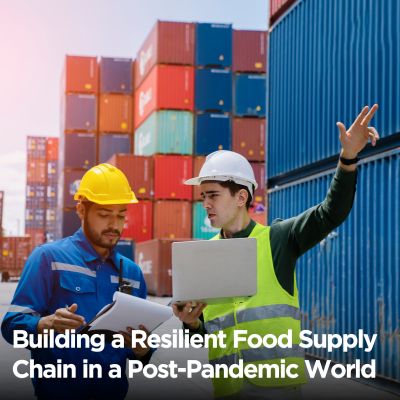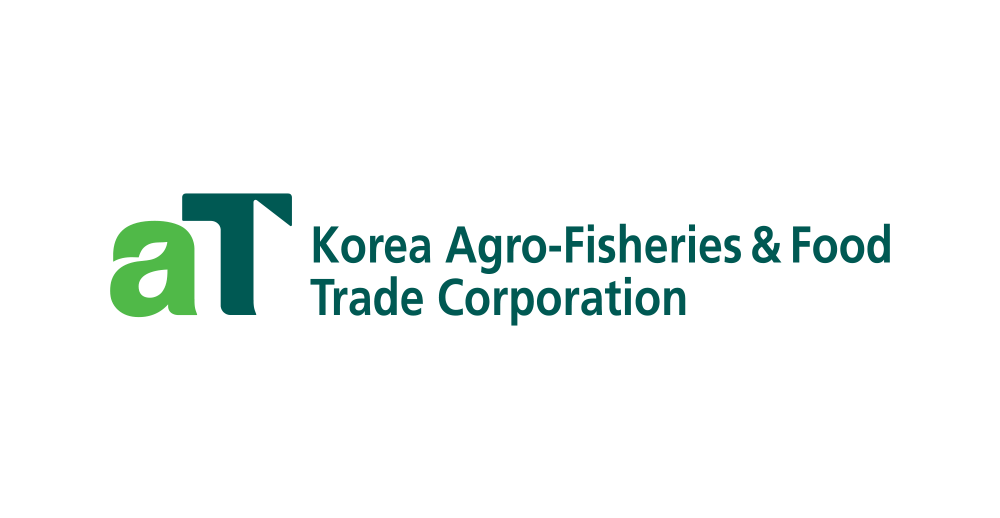According to a 2022 study, Southeast Asia produces 1.5 million metric tons of food packaging waste annually, contributing to one of the world’s largest sources of plastic pollution.
The environmental impact of food packaging is staggering. It affects ecosystems, contributes to global warming, and depletes finite natural resources. Packaging waste generated by the food industry plays a significant role in environmental degradation, with much of it ending up in oceans, landfills, and incinerators.
One of the primary concerns is the environmental impact of plastic packaging, which is widely used due to its durability and low cost. However, the long-term damage it causes, from polluting oceans to contributing to climate change, has sparked urgent calls for more sustainable alternatives.
With the food industry significantly contributing to global packaging waste, the need for sustainable packaging solutions has never been more critical.
In this article, we will explore the environmental impact of food packaging, the challenges of transitioning to sustainable packaging, and the innovative solutions driving positive change.
We will also examine how policies and regulations shape the future of packaging in Southeast Asia, focusing on packaging waste reduction and recycling initiatives.
Environmental Consequences of Food Packaging

The environmental impact of food packaging is wide-ranging, affecting multiple aspects of the ecosystem, including marine life, air quality, and the depletion of natural resources.
In this section, we will dive into three significant areas of concern: plastic pollution, greenhouse gas emissions, and resource depletion. These consequences highlight the urgent need for more sustainable packaging solutions to minimize the damage caused by the food industry.
1. Plastic Pollution
Plastic has long been the go-to material for food packaging due to its cost-effectiveness, lightweight nature, and versatility. However, its persistence in the environment has become one of the most pressing environmental threats globally.
According to the Ocean Conservancy, approximately 11 million tons of plastic waste end up in the ocean every year, and a significant portion of this originates from packaging used in the food industry.
Once discarded, plastic packaging often breaks down into microplastics, tiny plastic particles less than five millimeters in size. These microplastics have devastating effects on marine ecosystems.
- Impact on Marine Life: Marine animals, such as fish and birds, often ingest microplastics, leading to severe health issues. This plastic waste can block digestive tracts, reduce the absorption of nutrients, and ultimately lead to death. These plastics harm wildlife and enter the human food chain when seafood contaminated with microplastics is consumed, posing potential health risks.
- Pollution Hotspots in Southeast Asia: Countries like Thailand and Indonesia rank among the top contributors to oceanic plastic pollution in Southeast Asia. Due to inadequate waste management systems and the widespread use of plastic for food packaging, much of the plastic waste generated in these regions end up in waterways and, ultimately, the ocean.
Using sustainable packaging alternatives is critical for addressing the mounting plastic pollution problem.
While innovations like biodegradable materials and packaging waste reduction initiatives show promise, widespread adoption remains challenging, especially in regions with limited waste management infrastructure.
2. Greenhouse Gas Emissions
Plastic packaging production, transportation, and disposal contribute significantly to global greenhouse gas emissions.
Since plastic is primarily derived from fossil fuels, its production process involves extracting, refining, and polymerizing non-renewable resources, all of which release large quantities of carbon dioxide and other greenhouse gases into the atmosphere.
- Emissions from Production and Incineration: The life cycle of plastic packaging, from raw material extraction to disposal, is highly carbon-intensive. Moreover, incineration is a standard method of plastic waste disposal in regions like Southeast Asia. Incinerating plastic releases carbon dioxide and emits methane, a potent greenhouse gas over 25 times more effective at trapping heat in the atmosphere than carbon dioxide.
- Comparing Sustainable Packaging Options: Unlike traditional plastics, biodegradable and compostable materials derived from renewable resources like cornstarch, sugarcane, and bamboo have a much lower carbon footprint. These materials decompose more efficiently, releasing fewer greenhouse gases during their breakdown. For example, switching from conventional plastic to biodegradable packaging can reduce carbon emissions by up to 30% in some cases. However, the transition to these alternatives remains limited due to higher costs and challenges in scaling up production to meet the demands of the global food industry.
Southeast Asian nations, particularly Singapore, are implementing programs to reduce carbon emissions related to food packaging. Singapore’s Green Plan 2030 outlines goals to cut emissions by adopting eco-friendly packaging materials and investing in recycling infrastructure.
Despite these efforts, the global reliance on plastic continues to drive high levels of greenhouse gas emissions, making it imperative to scale up sustainable packaging across industries.
3. Resource Depletion
Plastic packaging is not only harmful due to its persistence in the environment but also because it relies heavily on the extraction of non-renewable fossil fuels.
Extracting, refining, and producing plastic is energy-intensive and depletes finite resources. Every year, millions of barrels of oil and natural gas are used in the production of plastic packaging, contributing to the rapid depletion of these valuable resources.
- Environmental Damage from Fossil Fuel Extraction: The extraction of fossil fuels needed to create plastic causes significant environmental damage. It leads to habitat destruction, soil degradation, and water contamination, affecting wildlife and human communities. For example, oil drilling operations often cause spills that contaminate water sources and disrupt ecosystems, while the refinement process generates toxic byproducts that further pollute the air and water.
- Energy and Water Consumption: Beyond fossil fuel depletion, the production of plastic packaging requires vast quantities of energy and water, making it unsustainable in the long term. According to a report by BPF, the energy required to produce plastic is roughly 6% of the world’s total oil production, while the water used in plastic manufacturing amounts to billions of gallons annually. With the global demand for food packaging rising, the pressure on these limited natural resources is becoming more severe.
Shifting toward sustainable packaging options that minimize resource consumption is essential for reducing the environmental strain caused by plastic production. Materials like paper, glass, and metal, which are more easily recyclable, offer potential solutions.
Additionally, innovations in plant-based plastics and biodegradable materials help reduce reliance on fossil fuels and promote more efficient resource use.
Challenges in Sustainable Food Packaging

While there is a growing need for more sustainable packaging solutions, the transition from conventional to eco-friendly materials is challenging.
Businesses, particularly in the food industry, need help adopting sustainable practices. These challenges include the high costs of sustainable materials, concerns over food safety, and varying consumer behavior.
1. Cost Implications
One of the most significant barriers to adopting sustainable packaging is the cost. For many businesses, particularly smaller food manufacturers and restaurants, switching from inexpensive plastic packaging to eco-friendly alternatives such as biodegradable or compostable materials can be financially prohibitive.
Traditional plastic remains the cheapest option for food packaging, while many sustainable alternatives come with a higher price tag due to the costs of sourcing and manufacturing.
For example, compostable materials derived from plants, such as cornstarch or bagasse (a byproduct of sugarcane), are often more expensive than traditional plastic. This can make it difficult for businesses to balance sustainability with profitability.
“Many businesses are finding it difficult to balance improving the sustainability of their product packaging and maintaining the right price point for their customers.”
Lindsay McLain, VP of Marketing, JUST Water
The food industry is highly cost-sensitive, and the added expense of sustainable packaging can make it challenging for companies to remain competitive while adopting environmentally friendly practices.
This is particularly true in Southeast Asia, where cost-conscious consumers and businesses may hesitate to pay more for sustainability initiatives.
2. Food Safety Concerns
Another critical challenge when transitioning to sustainable packaging is ensuring the materials meet food safety standards. Packaging must protect food from contamination, preserve freshness, and prevent spoilage.
Some sustainable materials, such as biodegradable plastics or compostable containers, may not offer the same level of protection as traditional materials, raising concerns about food safety and shelf life.
For example, while biodegradable materials like plant-based plastics or paper-based packaging may break down more quickly, they might not provide the same barrier protection against moisture or air as conventional plastics. This can lead to concerns over food spoilage or contamination during transport and storage.
In regions like Southeast Asia, where tropical climates can affect food preservation, it is crucial that sustainable packaging meets stringent safety requirements without compromising the quality of the food.
Moreover, regulatory requirements around food safety and packaging vary from country to country, creating additional hurdles for businesses looking to adopt sustainable practices.
While there is a strong demand for sustainable packaging, ensuring compliance with food safety standards remains a significant challenge for manufacturers and suppliers.
3. Consumer Behavior
Consumer attitudes toward sustainable packaging play a significant role in adopting eco-friendly materials. However, more consumer awareness of environmental issues and willingness to pay a premium for sustainable products are often needed.
While many consumers express concern about the environmental impact of plastic packaging, this concern does not always translate into purchasing decisions.
A study conducted by Accenture in Singapore revealed that while 80% of consumers were aware of the environmental impact of food packaging, only 35% were willing to pay more for products with sustainable packaging.
This disparity between awareness and action creates a challenge for businesses trying to justify the higher costs of eco-friendly materials. Companies may hesitate to switch to more expensive packaging options if they fear their customers will not be willing to absorb the additional costs.
Furthermore, consumer behavior around recycling and waste management can also hinder the effectiveness of sustainable packaging.
For example, if consumers need to sort and recycle their waste properly, even the most eco-friendly packaging may end up in landfills, defeating the purpose of the switch.
Educating consumers about the importance of recycling and packaging waste reduction is critical for ensuring the success of sustainable initiatives.
Innovations in Sustainable Food Packaging

As the demand for eco-friendly solutions grows, the food industry has seen significant advancements in sustainable packaging technologies.
These innovations range from biodegradable materials to recycling initiatives and even edible packaging. This section will explore some of the most promising developments in sustainable food packaging.
1. Biodegradable Materials
One of the most significant advancements in sustainable packaging is the development of biodegradable materials. These materials are designed to break down naturally over time, reducing waste in landfills or oceans.
Biodegradable packaging is typically made from plant-based sources, such as cornstarch, bagasse, or biopolymers.
In Singapore, several companies have adopted biodegradable packaging solutions to reduce their environmental footprint.
For example, restaurants and food vendors have started using takeaway containers made from bagasse, a byproduct of sugarcane processing. These containers are biodegradable and compostable, making them an excellent alternative to plastic.
Another promising material is biopolymers, which are derived from renewable resources such as corn or sugarcane.
Biopolymers can be used to create various packaging products, including films, containers, and wraps. Unlike traditional plastics, biopolymers break down more easily in natural environments, reducing the environmental impact of food packaging.
However, the widespread adoption of biodegradable materials still needs to be improved. While these materials are environmentally friendly, they can be more expensive to produce and may only sometimes perform as well as traditional plastics in terms of durability or food preservation.
Additionally, biodegradable materials, such as industrial composting facilities, require specific conditions to break down properly. Access to these facilities is necessary for even biodegradable packaging to end up in landfills, where decomposing takes longer.
2. Recycling Initiatives
In addition to biodegradable materials, recycling remains one of the most effective strategies for reducing the environmental impact of plastic packaging. Recycling programs in Southeast Asia have made significant strides in recent years, with countries like Singapore leading waste management and recycling innovation.
Singapore’s National Environment Agency (NEA) has implemented comprehensive recycling programs to reduce the amount of packaging waste sent to landfills.
For example, the NEA has introduced Mandatory Packaging Reporting for businesses, requiring them to track and report the amount of packaging waste they generate. This initiative encourages companies to adopt more sustainable practices by holding them accountable for their environmental impact.
Technological advancements have also improved the efficiency of recycling processes. New sorting technologies, such as optical scanners, can more accurately separate different types of packaging materials, reducing contamination in recycling streams.
This ensures that a higher percentage of food packaging can be successfully recycled, lowering the overall environmental impact of food packaging waste.
Furthermore, innovations in upcycling are gaining traction in the region. Upcycling refers to the process of transforming waste materials into new, higher-value products.
For example, companies are now repurposing used food packaging into products like construction materials, furniture, and textiles. This reduces the amount of waste sent to landfills and gives packaging materials a second life.
3. Edible Packaging
One of the most exciting innovations in sustainable packaging is the development of edible packaging. Edible packaging is made from safe materials, meaning that it can be eaten along with the food it contains, eliminating waste entirely.
Several startups and researchers in Southeast Asia are exploring edible packaging to solve the growing packaging waste problem.
For example, an Indonesian startup, Evoware, has developed edible packaging made from seaweed. This packaging is biodegradable and provides nutritional benefits, making it a zero-waste solution.
Edible packaging has the potential to revolutionize the food industry by offering a truly sustainable packaging option. However, widespread adoption is still in its early stages, and challenges such as cost, scalability, and regulatory approval must be addressed before it becomes a mainstream solution.
Regulations Supporting Sustainable Packaging in Southeast Asia
As the demand for sustainable packaging grows, governments in Southeast Asia have started implementing regulations to reduce the environmental impact of food packaging. These policies are designed to encourage businesses to adopt eco-friendly practices and promote the responsible disposal of packaging materials.
In this section, we will explore some of the key regulations in place and how they are helping to shape the future of packaging in the region.
1. Singapore’s Mandatory Packaging Reporting
Singapore is at the forefront of environmental regulation in Southeast Asia, particularly in terms of reducing packaging waste.
In 2020, Singapore’s National Environment Agency (NEA) introduced the Mandatory Packaging Reporting Scheme, which requires businesses to track and report the amount of packaging they use. This includes packaging used for both imports and locally produced products.
Under this scheme, businesses are encouraged to develop plans to reduce their packaging waste through initiatives such as recycling and adopting sustainable packaging alternatives.
The Singaporean government aims to hold businesses accountable for their environmental impact, create a culture of sustainability, and reduce the reliance on traditional plastic packaging.
Additionally, Singapore has set ambitious targets under its Singapore Green Plan 2030, which includes a goal to reduce the amount of waste sent to landfills by 30% over the next decade.
These initiatives push businesses to adopt more environmentally friendly packaging solutions and contribute to the country’s broader sustainability goals.
2. Thailand’s Plastic Waste Management Roadmap
Thailand has also made significant strides in tackling the environmental impact of plastic packaging. In 2018, the Thai government introduced the Plastic Waste Management Roadmap, which outlines a series of measures to reduce plastic waste in the country.
This roadmap includes a ban on single-use plastic bags, straws, and cups, as well as measures to encourage recycling and the adoption of sustainable packaging alternatives.
One key component of Thailand’s roadmap is the focus on extended producer responsibility (EPR), which holds businesses responsible for the environmental impact of their products throughout their lifecycle.
This includes packaging used for food and other consumer goods. By requiring businesses to manage the disposal of their packaging, the Thai government hopes to reduce the amount of plastic waste that ends up in landfills and oceans.
These regulatory efforts are part of a broader trend in Southeast Asia, where governments increasingly recognize the need for more sustainable practices in the food and packaging industries.
Countries in the region are taking necessary steps toward a more sustainable future by introducing policies that encourage packaging waste reduction and recycling.
Conclusion
The environmental impact of food packaging is a pressing issue that requires urgent action from businesses, governments, and consumers alike. From plastic pollution to greenhouse gas emissions, the consequences of traditional packaging are far-reaching and harmful to the planet.
However, the shift toward sustainable packaging solutions, such as biodegradable materials, recycling initiatives, and even edible packaging, offers hope for a greener future.
While cost and food safety concerns remain, innovations in packaging technology and government regulations, like Singapore’s Mandatory Packaging Reporting and Thailand’s Plastic Waste Management Roadmap, are driving positive change.
If we continue to invest in sustainable packaging solutions and support policies that promote environmental responsibility, the food industry can play a key role in reducing the environmental impact of plastic packaging and moving toward a more sustainable future.





























